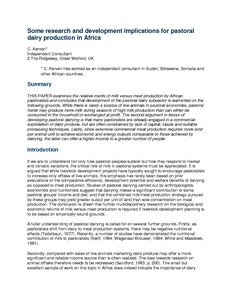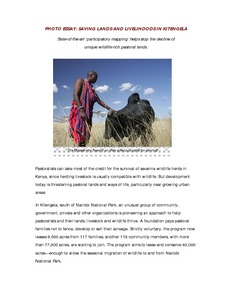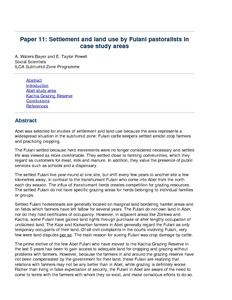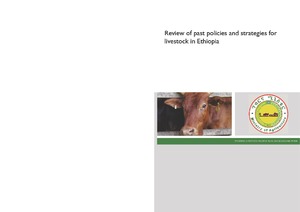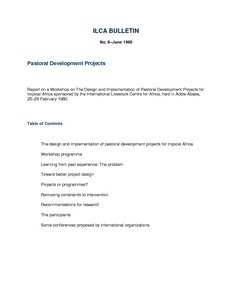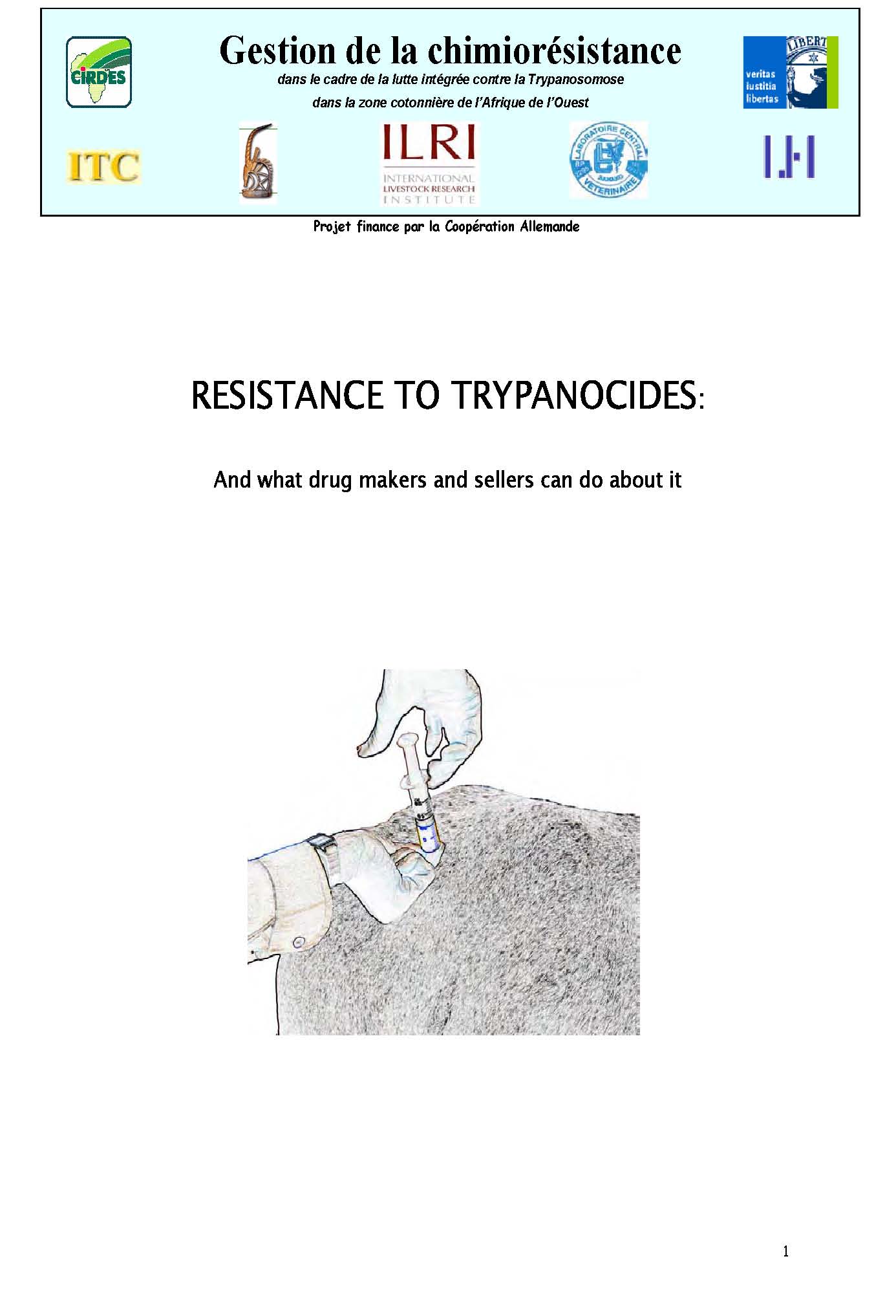espace pastoral
AGROVOC URI:
Social organization and water control among the Borana of southern Ethiopia
Description of the socioeconomic organization of the Borana pastoralists with particular reference to the Gada System and the traditional well organization.
Socio-economic characteristics and perceptions of cattle keepers and constraints to cattle production in western Kenya
A cross-sectional survey was done in two Districts in Western Kenya to determine the socio-economic characteristics and perceptions of the cattle types kept. This involved socio-economic profiles of households, herd structure, reasons for keeping specific types of cattle and production and marketing constraints together with desired policy interventions to address the constraints. A total of 210 farmers randomly selected were interviewed. The data was analysed using Statistical Analysis System program. The majority of farmers (84%) were males.
Some aspects and implications of the development of grazing blocks in northern province, Kenya
Organizational and management problems associated w. development of grazing blocks in north eastern kenya w. spec. ref. to the Somali pastoralists and their socioeconomic organization.
Some research and development implications for pastoral dairy production in Africa
Examines the relative merits of milk versus meat production by African pastoralists. Discusses the implications for livestock development policy.
Settlement and land use by Fulani pastoralists in case study areas
Presents results of studies of settlement, land use & relations w. settled farmers of Fulani agropastoralists in Abet & Kachia Grazing Reserve in Subhumid Nigeria. Discusses reasons of choice of site, pattern & right of grazing and access to land.
Small ruminant research and development in Africa: proceedings of the Third Biennial Conference of the African Small Ruminant Research Network : UICC, Kampala, Uganda, 5-9 December 1994
This volume contains papers and abstracts of the Third Biennial Conference of the African Small Ruminant Research Network. In addition to the keynote address, there are nine papers on Genetic Resources Enhancement and Utilisation, seven papers on Production Systems, Policy and Economics, six papers on Management and Health, 12 papers and Feeding Systems and 10 papers on Performance and Reproduction. Six poster abstracts covering the above topics add to the volume.
Scope for improvement of small ruminant production in the Sahel
This chapter investigates the options for improving the performance of small ruminants interms of their contribution to household incomes. The characteristics of the existing production system are first sketched in order to identify the resource requirements and constraints of the system. Based on this imformation, a steady-state flock model is then developed and used to assess the impact of variation in growth, reproduction and mortality rates production.
Review of past policies and strategies for livestock in Ethiopia
Report on a workshop on the design and implementation of pastoral development projects for tropical Africa
Synthesis of discussion on the design and implementation of pastoral development projects, particularly with reference to the project concept, basic constraints and information needs, organizational aspects and monitoring, w. recommendations.



